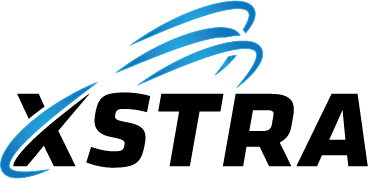CIOCTO is the world’s only solution that combines deep systems integration and multi-dimensional client information into one software tool! Its elegant, modern interface is fast to learn and easy for new users, yet powerful for professionals. CIOCTO lets you work faster and at a higher quality because you don’t have to learn multiple apps or switch software for different tasks. That means you can work with multiple technologies with full audit and financial synergies throughout the entire client engagement process. It’s like having your own IT department in a single app! Best of all, by learning CIOCTO, you can help more clients with less effort, using tools that mean your professional career in all aspects, is able to reach its full potential.
If you look at old documentaries, movies, or TV shows, you are often reminded of how business used to be conducted. Every office had a manager, who was never called by his first name, it was always “Mr …” (it was rather rare for a manager to be female) and he usually had a female assistant, and the business structure was a straight line – the ladder. If you were in a position that branched from the main ladder – an assistant, a mail clerk, a janitor – you had very little chance of promotion. This pattern of business was common until it began to fade in the 80s-90s.
Except: technology didn’t get the memo.
The business structure rigidity is inherent in the entity structure built into just about every software package on the market. If someone changes the department they work in, it is a big process for HR and IT to move them into the right “silo”. Someone who relocates from the UK office to the Sydney office, naturally expects to have a period of time when all the processes and permissions slowly catch up. Being able to print to the correct printer, access the right folders would never be instant. Payroll will have a “glitch” or two whilst working out the taxes, accounts etc. As a result of the markets that each office operates in, there is often different software used that a new team member will have to be given an account in. Hiring brand new staff has some of these challenges as well. To compensate, businesses factor this into their HR and IT procedures, and when deciding on transfers or new hires this overhead is part of the “is it worth it?” analysis.
Teamwork, experimentation, and innovation has suffered too. When someone has an idea, they gather a team to work on it – often the nature of the idea means they need a sampling of team members across multiple departments – finance, HR, administration etc. From a budget perspective, often the best accounting can offer is “tags”, anything related to this project/pilot program/trial should be tagged accordingly, then at some point we can create complex reports to look at the tags. From an IT perspective it is worse, this person is not allowed to look at that file, we need these people to look at this file but not those ones … often the “solution” here is that a new folder is created, everyone in the team is given access to the new folder, and the appropriate files are copied into it, creating duplicates, files out of sync … and it only gets worse and more complex from there.
With the current technologies available, it shouldn’t be like this. This is where the CIOCTO project comes in. The research and development we are currently doing, is exploring a more fluid entity structure, dynamic ways of assigning licences, more accurate and timely cost allocation reporting and database driven filesystems that minimise duplications without the security nightmare. Having the backing of a Managed Service Provider (MSP) means this is the domain we are starting in. Looking at the MSP processes and seeing where they are hampered from the rigidity mentioned and experimenting with less rigid, yet still controlled processes. What we are finding is that whilst a lot of software packages have some problems, they are still “best-in-class” with some of their features, and just need an overall tooling suite to integrate them through Application Programming Interfaces (APIs).
Our overall vision is one of enablement. If decision makers were handed a suite of tools that made it easier for hiring, transfers and teamwork, a lot more could be achieved, and a lot more resources could be focused on innovation.
Need more help with this?
© 2021–2025 XSTRA Group Pty Ltd (Australia). All rights reserved.


